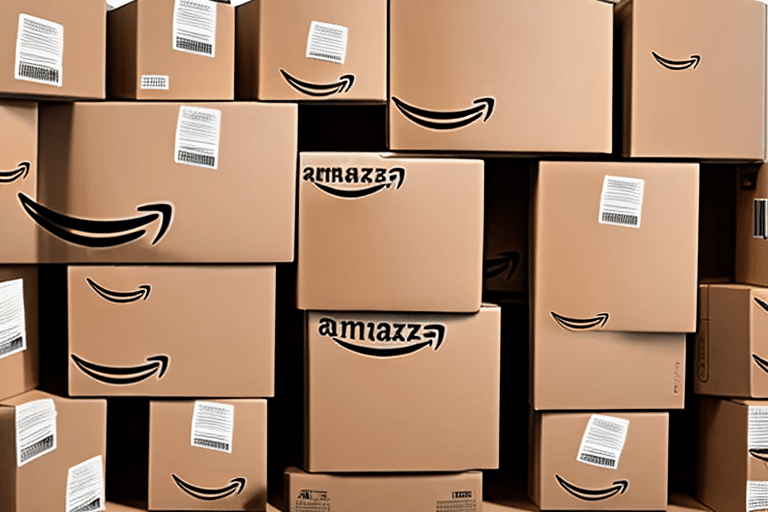What is FBA by Amazon?
Fulfillment by Amazon (FBA) is a service provided by Amazon that allows businesses to store their products in Amazon's fulfillment centers. Amazon handles the storage, packaging, shipping, and customer service for these products, enabling sellers to focus on other aspects of their business such as product development and marketing.
By leveraging Amazon's extensive logistics network, businesses can reach a broader audience and tap into Amazon Prime's customer base, which is known for higher purchase rates due to benefits like free and fast shipping.
Benefits of Using FBA
Increased Reach and Visibility
FBA allows sellers to list their products on Amazon’s marketplace, providing access to millions of Amazon customers worldwide. This significantly increases the potential for higher sales and brand visibility.
Access to Amazon Prime
Products fulfilled by Amazon are eligible for Amazon Prime, attracting Prime members who are more likely to make repeat purchases due to perks like free two-day shipping.
Cost and Time Efficiency
Outsourcing fulfillment to Amazon reduces the need for businesses to invest in warehousing and logistics. This can lead to cost savings and allow businesses to allocate resources to other growth areas.
Reliable Customer Service
Amazon manages customer inquiries, returns, and complaints, ensuring a consistent and professional level of service that can enhance customer satisfaction and loyalty.
Getting Started with FBA
Setting Up an Amazon Seller Account
To begin using FBA, you must first create an Amazon seller account. This involves providing business details, banking information, and agreeing to Amazon’s selling policies.
Registering for FBA
Once your seller account is active, you can enroll in FBA by navigating to the FBA section in your seller dashboard and following the registration steps.
Understanding Fees
FBA involves various fees, including storage fees, fulfillment fees, and additional service fees. Utilizing Amazon’s FBA Revenue Calculator can help estimate these costs and assess profitability.
Packaging and Labeling Requirements
Amazon has specific guidelines for packaging and labeling products. Ensuring compliance with these standards is crucial to avoid delays and additional fees.
Managing and Optimizing Your FBA Business
Inventory Management
Effective inventory management ensures that products are consistently available to meet customer demand. Tools like Amazon’s Inventory Performance Index (IPI) help monitor and optimize inventory levels.
Listing Optimization
Creating detailed and keyword-rich product listings enhances visibility in search results. High-quality images, clear descriptions, and relevant keywords are essential for attracting customers.
Using Amazon’s Tools
FBA offers various tools such as Amazon Advertising to promote products, and inventory management tools to track stock levels and sales performance.
Advanced Strategies for Increasing Profits with FBA
Utilizing Amazon Advertising
Investing in Amazon’s Sponsored Products and Sponsored Brands can increase product visibility and drive higher sales. Data-driven advertising strategies can optimize ad spend and maximize return on investment.
Competitive Pricing Strategies
Regularly analyzing competitor pricing and adjusting your prices accordingly can help maintain competitiveness while ensuring profitability. Tools like CamelCamelCamel can track price history and trends.
Expanding Product Lines
Diversifying your product offerings can attract a wider customer base and reduce dependency on a single product, mitigating risk and fostering business growth.
Measuring Success and Troubleshooting FBA
Performance Metrics
Key performance indicators (KPIs) such as sales volume, profit margins, and customer feedback are critical for assessing the success of your FBA operations. Regularly reviewing these metrics can identify areas for improvement.
Inventory Performance Index (IPI)
The IPI measures how well you manage your inventory. A higher IPI score can lead to benefits like lower storage fees and increased storage limits. Improving IPI involves reducing excess inventory and maintaining high sell-through rates.
Troubleshooting Common Issues
Common challenges with FBA include shipping delays, inventory discrepancies, and misplacement of items. Utilizing Amazon’s support services and promptly addressing issues can minimize disruptions to your business.
FBA vs. Other Fulfillment Options
Comparing to In-House Fulfillment
Managing fulfillment in-house requires significant investment in warehousing, staff, and logistics, which can be cost-prohibitive for smaller businesses. FBA offers a scalable alternative with lower upfront costs.
Comparing to Third-Party Logistics (3PL)
While 3PL providers can offer customized solutions, FBA provides the advantage of seamless integration with Amazon’s marketplace and Prime services, enhancing overall efficiency and customer reach.
Success Stories and Future Trends
Real-World Successes
Numerous businesses have scaled significantly using FBA. For instance, a small electronics retailer saw a 300% increase in sales within a year of switching to FBA, leveraging Amazon’s logistics and customer base to drive growth.
Future Developments in FBA
Emerging trends in FBA include the integration of artificial intelligence and machine learning to optimize inventory management and predictive analytics to forecast demand. Additionally, advancements in automation within fulfillment centers are expected to enhance efficiency and reduce costs.
Conclusion
Fulfillment by Amazon is a powerful tool for businesses aiming to scale operations, reach a broader market, and enhance customer satisfaction. By understanding the benefits, effectively managing your inventory, optimizing listings, and leveraging advanced strategies, you can maximize your profits and achieve sustained growth with FBA. Staying informed about future trends and continuously refining your approach will ensure long-term success in the competitive e-commerce landscape.








